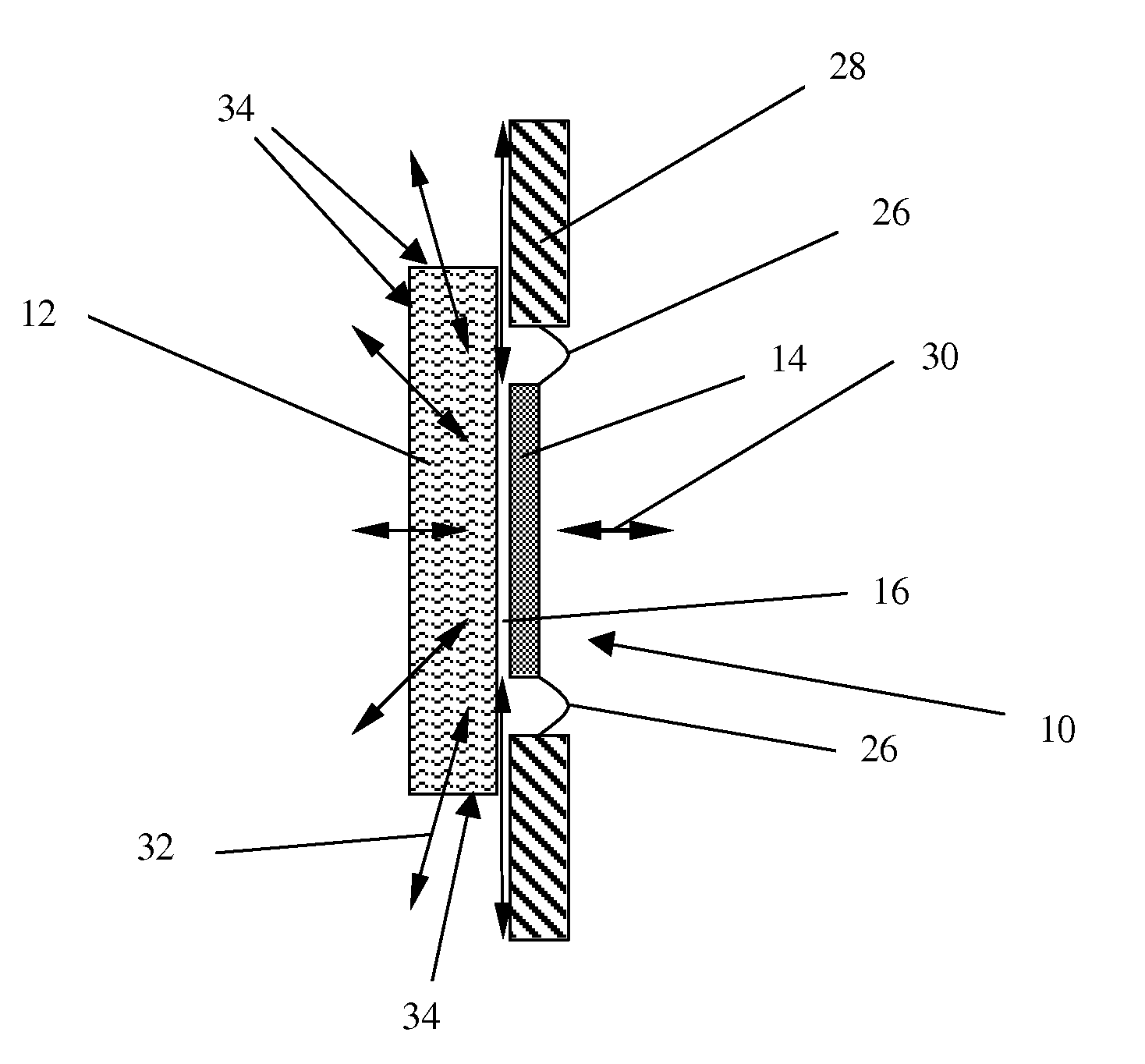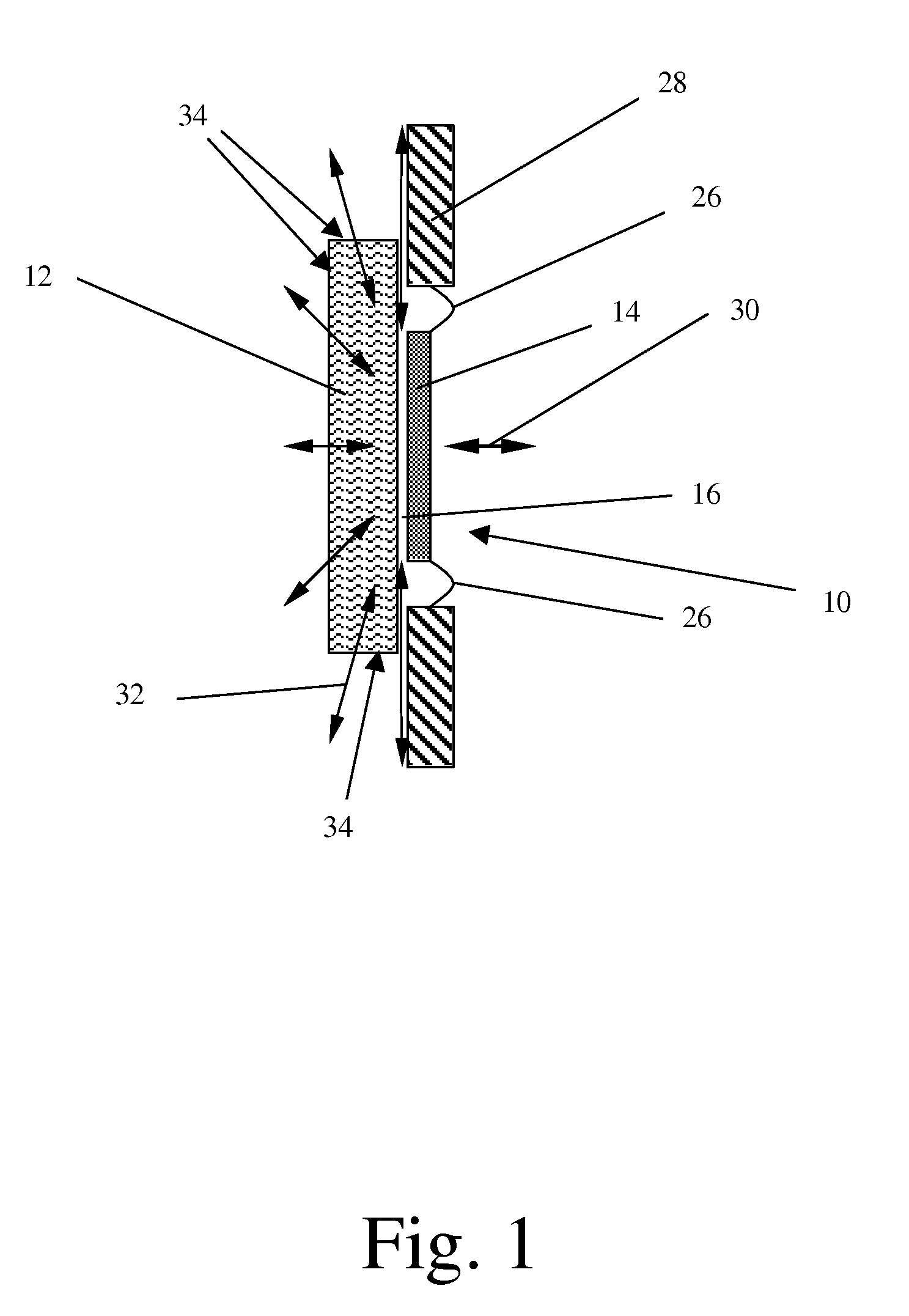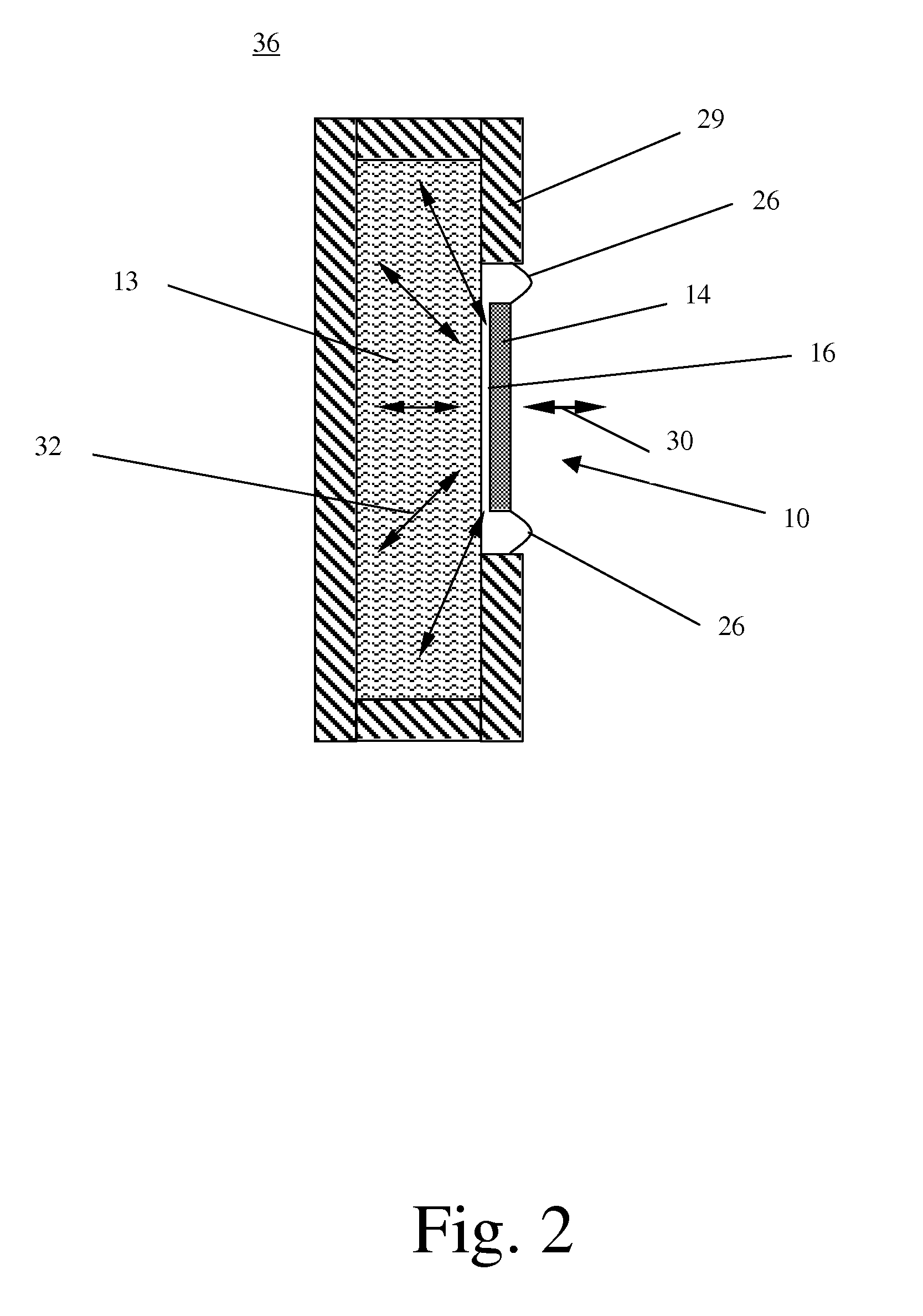Arrangement For Optimizing the Frequency Response of an Electro-Acoustic Transducer
a technology of electro-acoustic transducers and frequency response, which is applied in the direction of electrical transducers, transducer details, semiconductor devices, etc., can solve the problems of inability to apply existing electro-acoustic transducers, inability to reduce the influence of modes on the frequency response of electro-acoustic transducers, and inability to achieve the effect of reducing the influence of modes
- Summary
- Abstract
- Description
- Claims
- Application Information
AI Technical Summary
Benefits of technology
Problems solved by technology
Method used
Image
Examples
Embodiment Construction
[0030]Identical, similar, and functionally identical or similar elements can be denoted with the same reference numerals in the following description.
[0031]FIG. 1 shows an electro-acoustic transducer configured as a loudspeaker 10 with a plane membrane 14, for example a rigid plate, which is mounted in an opening of an acoustically “open” housing 28, for example a wall with an opening for the loudspeaker 10. The membrane 14 of the loudspeaker 10 is mounted at the housing 28 by a suspension 26, which is flexible such that the membrane 14 may oscillate or vibrate unimpeded.
[0032]A plate-shaped damping element 12 comprising a porous material is rigidly mounted immediately behind the sound emanating side of the membrane 14 such that only a small air gap 16 is provided between the membrane 14 and the damping element 12. The air gap 16 is sized so small that the membrane 14 is acoustically coupled to the damping element 12 as rigidly as possible without touching it, in order to optimally ...
PUM
 Login to View More
Login to View More Abstract
Description
Claims
Application Information
 Login to View More
Login to View More - R&D
- Intellectual Property
- Life Sciences
- Materials
- Tech Scout
- Unparalleled Data Quality
- Higher Quality Content
- 60% Fewer Hallucinations
Browse by: Latest US Patents, China's latest patents, Technical Efficacy Thesaurus, Application Domain, Technology Topic, Popular Technical Reports.
© 2025 PatSnap. All rights reserved.Legal|Privacy policy|Modern Slavery Act Transparency Statement|Sitemap|About US| Contact US: help@patsnap.com



